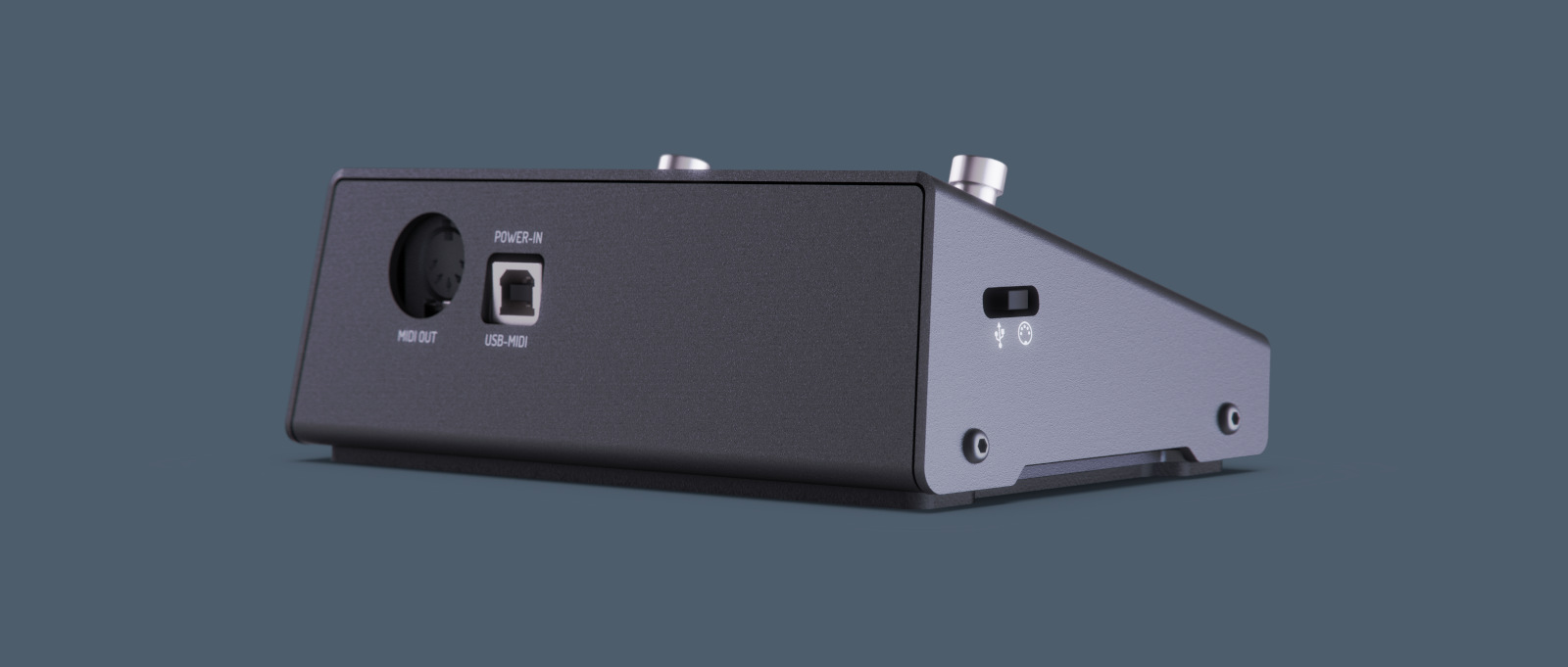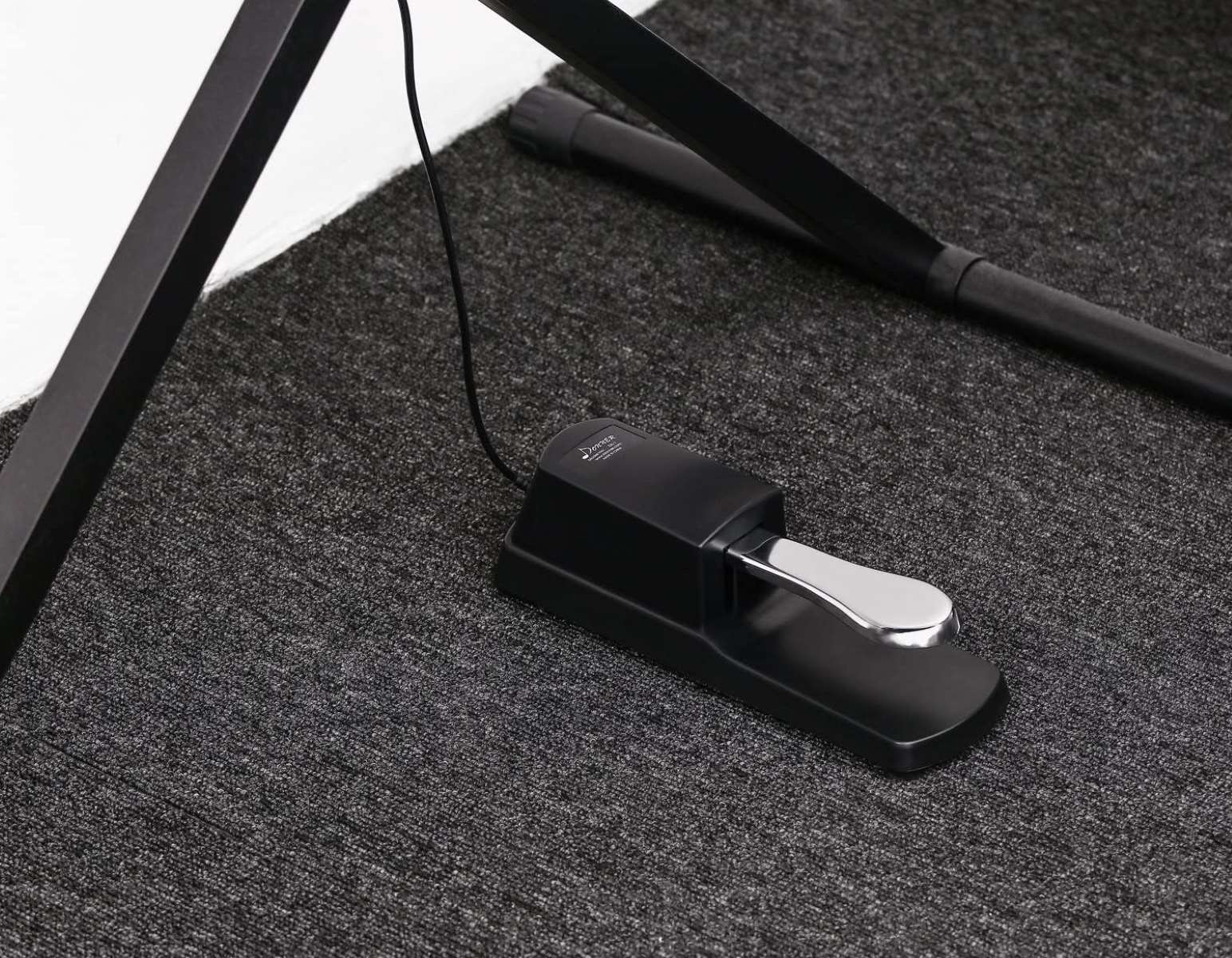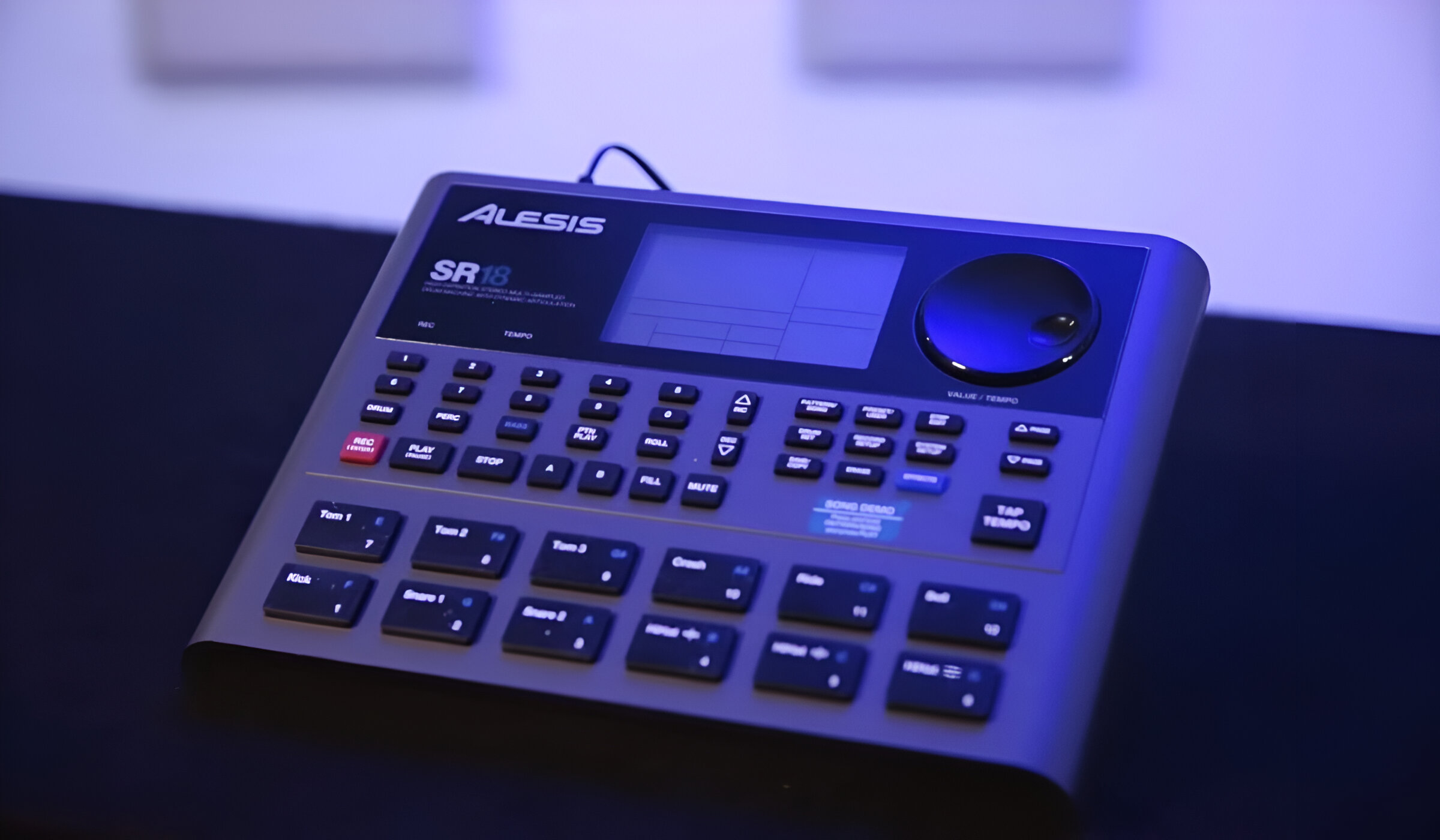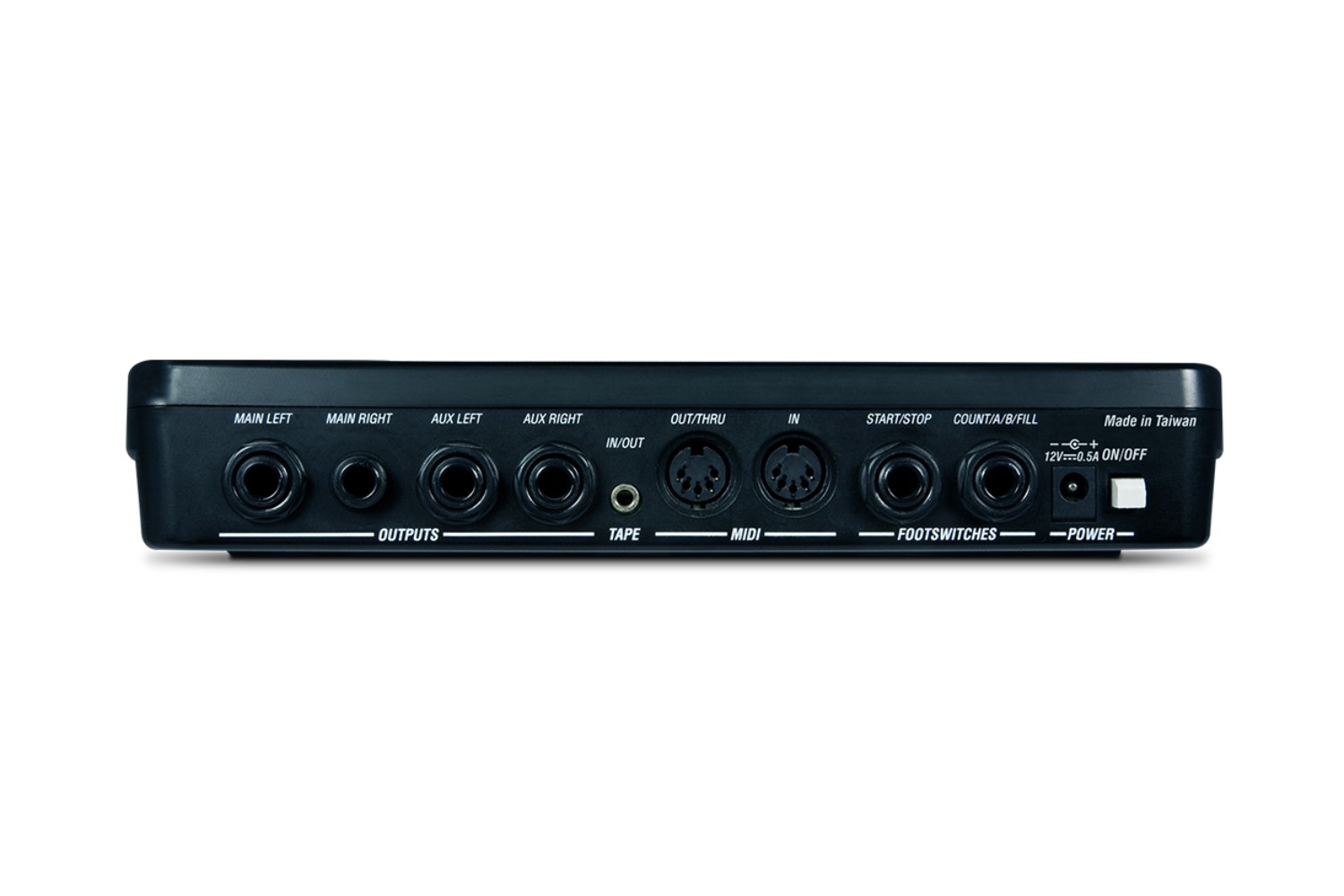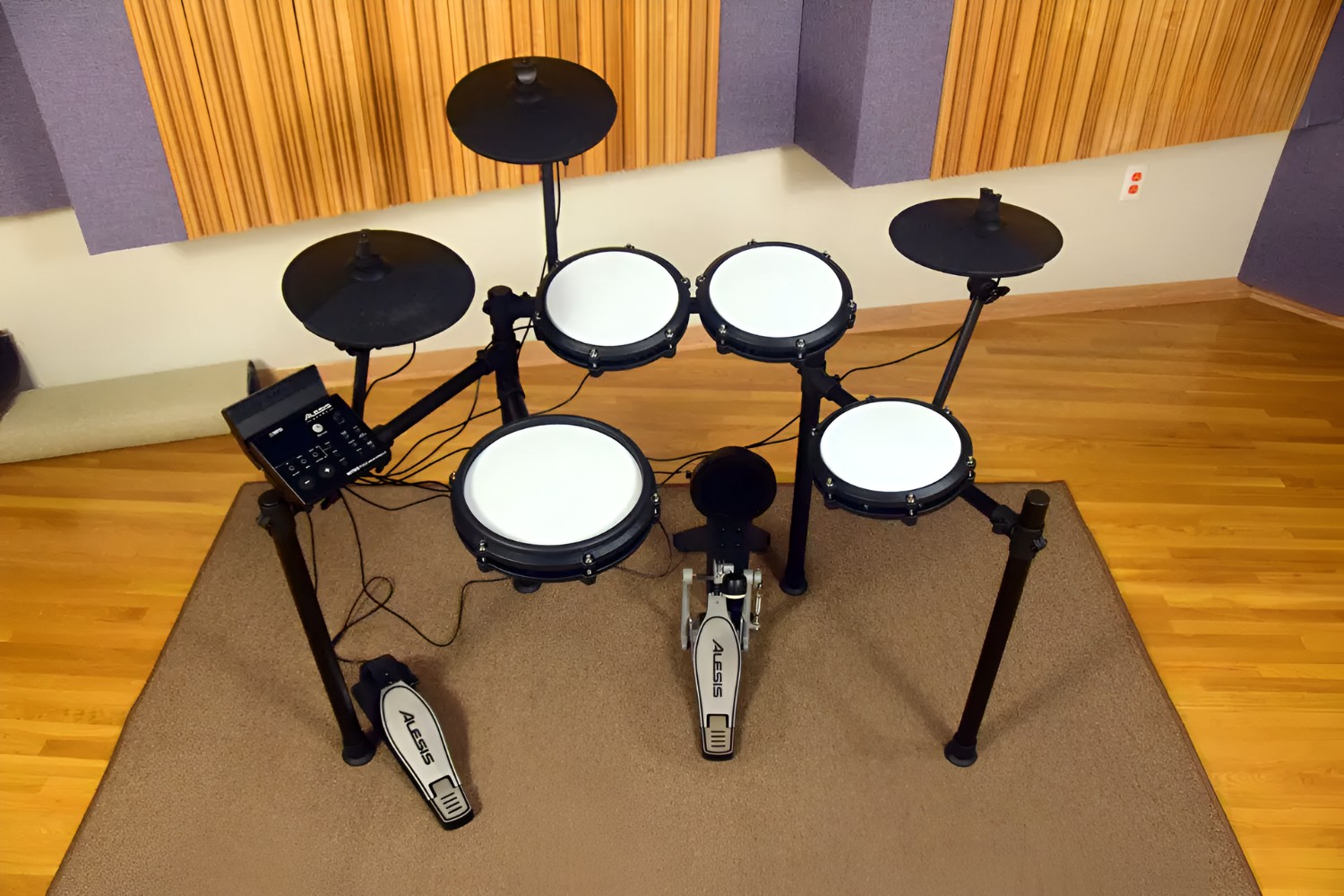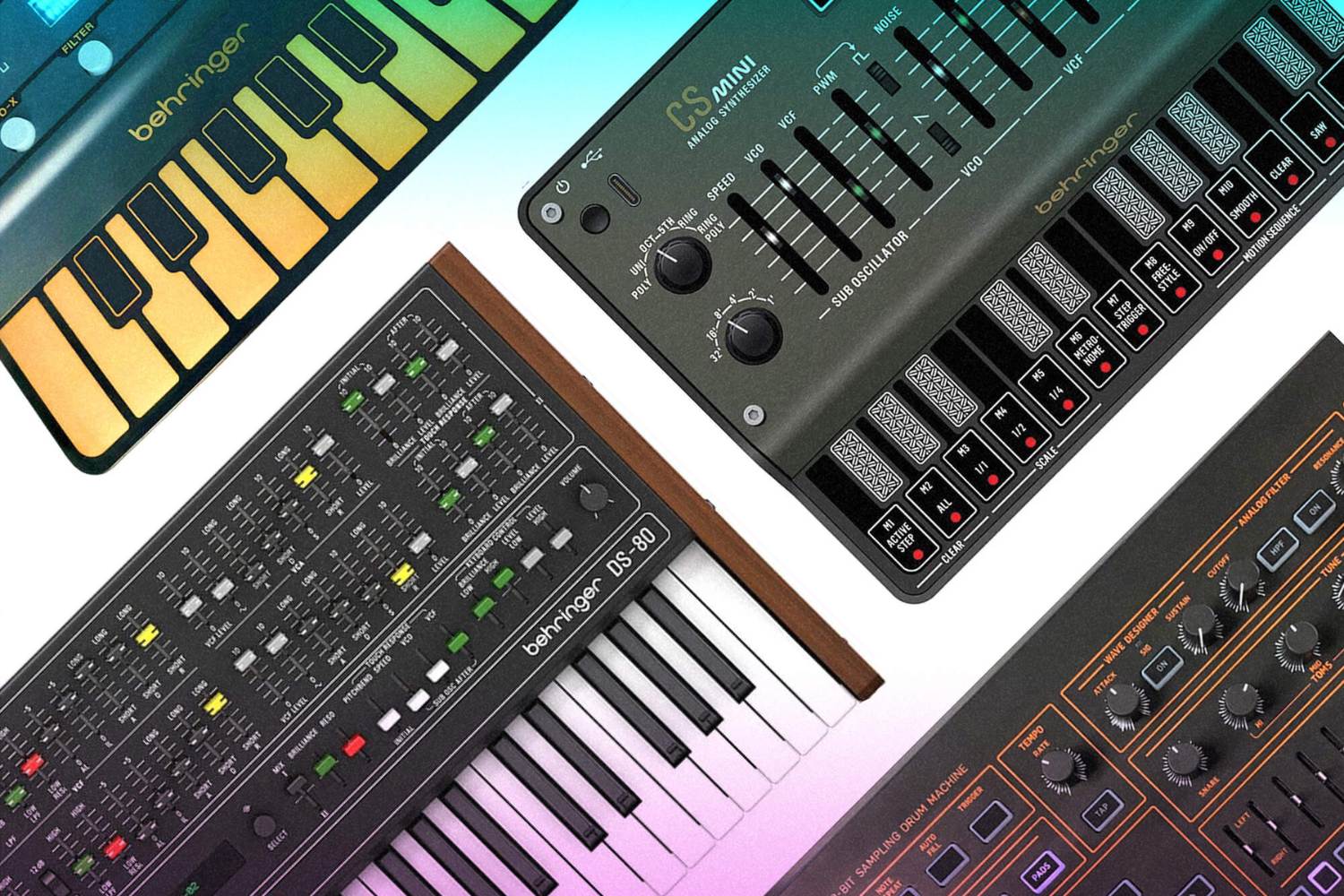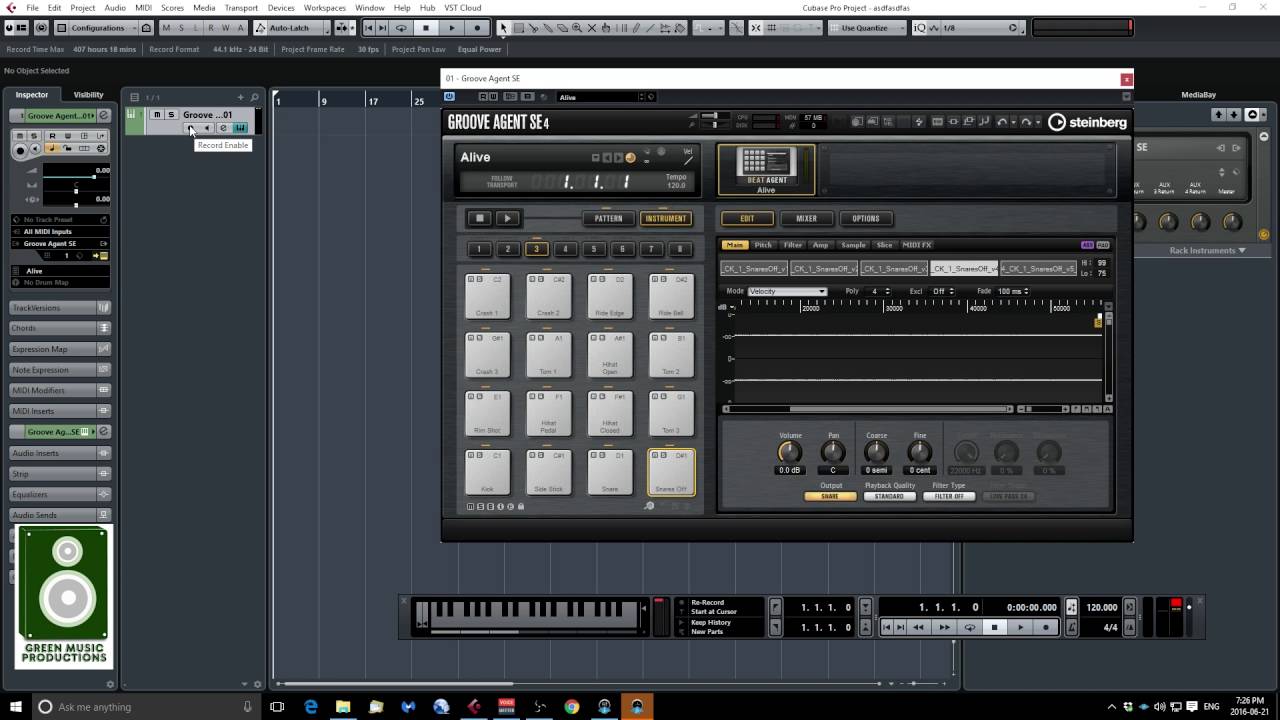Introduction
What Is a MIDI Keyboard Footswitch Used For?
When it comes to creating music, the tools of the trade have evolved over time. Musicians and producers are constantly seeking innovative ways to enhance their creative process and streamline their workflow. One such tool that has become indispensable in the realm of music production is the MIDI keyboard footswitch. This unassuming yet powerful device has revolutionized the way musicians interact with their instruments and software, offering a hands-free solution for controlling various functions during performances and studio sessions.
The MIDI keyboard footswitch serves as a versatile and convenient accessory, enabling musicians to execute commands, trigger effects, and manipulate parameters with the simple tap of a foot. Its integration into the music production setup empowers artists to focus on their performance without being tethered to physical controls, ultimately enhancing their expressiveness and stage presence.
In this comprehensive guide, we will delve into the world of MIDI keyboard footswitches, exploring their functionality, applications, and the key factors to consider when choosing the right one for your musical endeavors. Whether you're a seasoned performer, a studio aficionado, or an aspiring music producer, understanding the potential of a MIDI keyboard footswitch can elevate your musical journey to new heights. Join us as we uncover the myriad uses and benefits of this innovative tool, and discover how it can become an indispensable asset in your musical arsenal.
What Is a MIDI Keyboard Footswitch?
A MIDI keyboard footswitch, also known as a sustain pedal or foot controller, is a compact yet impactful device designed to augment the functionality of MIDI keyboards and other compatible musical instruments. Unlike traditional sustain pedals that are primarily used to sustain notes, MIDI keyboard footswitches offer a broader range of capabilities, allowing performers and producers to execute a variety of commands and functions using their feet.
These footswitches are equipped with one or more foot-operated buttons or pedals that can be assigned to trigger specific MIDI events, control parameters, activate effects, switch between presets, and perform various other tasks within MIDI-compatible software and hardware. The versatility of MIDI keyboard footswitches makes them invaluable tools for musicians across different genres and production environments.
Furthermore, MIDI keyboard footswitches are designed to seamlessly integrate with MIDI (Musical Instrument Digital Interface) technology, which serves as a universal communication protocol for electronic musical instruments, computers, and audio production equipment. This integration enables the footswitch to transmit MIDI messages to connected devices, allowing for real-time control and manipulation of musical elements.
Whether used in a live performance setting or a recording studio, a MIDI keyboard footswitch empowers musicians to interact with their instruments and software in a hands-free manner, enhancing their creative expression and performance dynamics. From triggering drum samples and switching between instrument sounds to activating loopers and controlling virtual effects, the applications of a MIDI keyboard footswitch are as diverse as the musical styles it serves.
How Does a MIDI Keyboard Footswitch Work?
At its core, a MIDI keyboard footswitch operates by converting physical foot movements into MIDI messages, which are then transmitted to MIDI-compatible devices such as keyboards, synthesizers, digital audio workstations (DAWs), and software plugins. This seamless interaction is made possible through the integration of MIDI technology, enabling the footswitch to serve as a versatile controller for a wide array of musical functions.
When a musician engages the footswitch by pressing its designated pedal or button, the device generates MIDI data that corresponds to the assigned action or command. This MIDI data is transmitted via a standard MIDI cable or USB connection to the receiving MIDI device, where it is interpreted and executed in real time. The responsiveness and precision of MIDI communication ensure that the footswitch commands are seamlessly integrated into the musical performance or production process.
Moreover, the flexibility of MIDI allows for extensive customization of the footswitch’s functionality. Musicians and producers can configure the footswitch to trigger specific notes, chords, or sequences, initiate playback and recording functions, adjust parameters such as volume and modulation, and control effects such as reverb, delay, and pitch modulation. This adaptability empowers users to tailor the footswitch to their specific needs, whether they are performing on stage, recording in the studio, or experimenting with new musical ideas.
Furthermore, many MIDI keyboard footswitches offer programmable capabilities, allowing users to create and store custom presets that map different footswitch actions to specific MIDI commands. This feature enables seamless transitions between songs, sections, and musical arrangements, providing a fluid and dynamic performance experience. Additionally, the compatibility of MIDI footswitches with a wide range of MIDI-enabled hardware and software makes them indispensable tools for musicians and producers seeking a unified and efficient control interface.
Overall, the operational mechanism of a MIDI keyboard footswitch revolves around its ability to translate physical foot movements into expressive and actionable MIDI commands, offering musicians a hands-free means of interacting with their musical instruments and digital tools.
Uses of a MIDI Keyboard Footswitch
The versatility of a MIDI keyboard footswitch lends itself to a myriad of creative and practical applications, catering to the diverse needs of musicians, performers, and producers. Whether in a live performance setting or a recording studio, the footswitch serves as a valuable tool for enhancing musical expression, streamlining workflow, and unlocking new possibilities in music production. Below are some of the key uses of a MIDI keyboard footswitch:
-
Hands-Free Performance: One of the primary uses of a MIDI keyboard footswitch is to enable hands-free control of musical elements during live performances. Musicians can trigger backing tracks, switch between instrument sounds, control effects, and initiate loops without interrupting their instrumental or vocal performance, enhancing the overall dynamism and versatility of their onstage presentation.
-
Parameter Control: MIDI footswitches allow for real-time manipulation of parameters such as volume, modulation, pitch bend, and expression. This level of control empowers performers to infuse their music with nuanced dynamics and articulation, adding depth and emotion to their live renditions.
-
Effect Activation: By assigning specific footswitch actions to activate and deactivate effects processors, musicians can create seamless transitions between different sonic textures and tonal palettes. This capability is particularly valuable for guitarists, keyboardists, and vocalists looking to enhance their sonic palette during performances.
-
Playback and Recording: MIDI footswitches offer convenient playback and recording control, allowing artists to start and stop audio playback, trigger recording sessions, and navigate through song arrangements with ease. This functionality is invaluable for solo performers, bands, and studio musicians seeking efficient control over their musical sequences and arrangements.
-
Looping and Sampling: Many MIDI footswitches are equipped with looping and sampling capabilities, enabling musicians to create and layer loops in real time. This feature is particularly popular among live looping artists and electronic music performers, as it provides a seamless and intuitive means of building complex musical textures on the fly.
-
Software Control: In the realm of music production, MIDI footswitches serve as tactile controllers for software instruments and effects within digital audio workstations (DAWs). Producers can assign footswitch actions to trigger virtual instruments, manipulate software parameters, and engage recording functions, enhancing their creative workflow and performance precision.
These diverse uses underscore the indispensable role of MIDI keyboard footswitches in modern music creation and performance, offering artists a versatile and intuitive means of interacting with their musical tools and unleashing their creative potential.
Choosing the Right MIDI Keyboard Footswitch
When selecting a MIDI keyboard footswitch, several key factors should be taken into consideration to ensure that the chosen device aligns with the specific needs and preferences of the user. Whether intended for live performances, studio recording, or a combination of both, the following considerations can guide musicians and producers in choosing the right MIDI keyboard footswitch:
-
Number of Pedals/Buttons: The desired functionality and versatility of the footswitch dictate the number of pedals or buttons required. Single-pedal footswitches are ideal for basic sustain and control functions, while multi-pedal footswitches offer expanded capabilities for triggering diverse commands and actions.
-
Assignable Controls: Look for a footswitch that provides customizable and assignable controls, allowing users to map specific MIDI commands to each pedal or button. This flexibility enables tailored configurations for different musical contexts and performance requirements.
-
Compatibility: Ensure that the chosen footswitch is compatible with the MIDI-enabled devices and software in your setup, such as keyboards, synthesizers, DAWs, and MIDI controllers. Compatibility ensures seamless integration and reliable communication between the footswitch and connected equipment.
-
Build Quality and Durability: Assess the construction and durability of the footswitch, especially if it will be used in live performance settings. Sturdy construction, non-slip surfaces, and robust pedal mechanisms contribute to the longevity and reliability of the footswitch under rigorous usage.
-
Expression Pedal Integration: For enhanced control over parameters such as volume, modulation, and expression, consider a footswitch that integrates an expression pedal. This feature expands the range of expressive possibilities and adds a layer of dynamic control to the footswitch setup.
-
Programmability and Memory: If versatility and preset management are crucial, opt for a footswitch with programmable capabilities and ample memory for storing custom configurations. The ability to recall and switch between presets seamlessly enhances the adaptability and efficiency of the footswitch.
By evaluating these factors and considering the specific requirements of their musical workflow, musicians and producers can make informed decisions when choosing a MIDI keyboard footswitch that complements their creative vision and performance objectives. Additionally, seeking out user reviews and demonstrations can provide valuable insights into the practical functionality and user experience of different footswitch models, aiding in the selection process.
Conclusion
The MIDI keyboard footswitch stands as a testament to the seamless fusion of technology and musical expression, offering musicians and producers a versatile and intuitive means of controlling their instruments and software. From live performances brimming with dynamic stage presence to studio sessions marked by efficient workflow and creative exploration, the footswitch has become an indispensable tool in the modern music landscape.
By harnessing the power of MIDI technology, the footswitch empowers users to transcend the limitations of traditional control interfaces, providing hands-free command execution, expressive parameter manipulation, and seamless integration with MIDI-compatible devices and software. Its diverse applications, ranging from effect activation and parameter control to loop creation and software manipulation, underscore its adaptability across various musical contexts and genres.
When selecting a MIDI keyboard footswitch, careful consideration of factors such as pedal/button configuration, compatibility, build quality, and programmability is essential to ensure that the chosen device aligns with the unique needs and preferences of the user. By making informed decisions and exploring the wealth of options available, musicians and producers can integrate the perfect footswitch into their musical setups, unlocking new realms of creativity and performance possibilities.
As the landscape of music production and performance continues to evolve, the MIDI keyboard footswitch remains a steadfast companion, bridging the gap between artistic vision and tangible expression. Its role in shaping the sonic landscapes of today and tomorrow is a testament to the enduring impact of innovative tools in the hands of passionate creators. With its ability to enhance musical expression, streamline workflow, and unlock new dimensions of creativity, the MIDI keyboard footswitch stands as a testament to the enduring fusion of technology and artistry in the realm of music.







